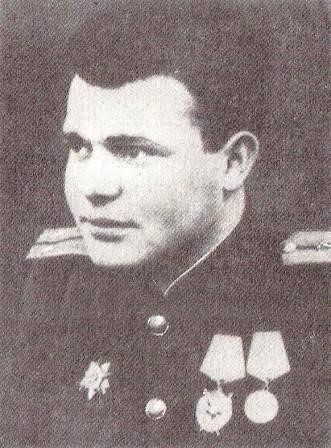Lev Pevzner was born in 1923 in the town of Belynichi, east Belorussia, the eldest of four children. His father, Boris, was a tailor. In 1930, Boris joined the Communist Party, and this enabled him to become chairman of the local tailors' cooperative (artel). However, he also had to remove Lev from the kheider which the latter was attending. In June 1941, Lev finished school and received a call-up notice for the Higher Engineering and Technical School of the Navy in Leningrad (present-day St. Petersburg, Russia). Two days later, on June 22, when Pevzner came to the recruitment office to receive travel documents to Leningrad, the Soviet-German war began. The train on which he traveled to Leningrad came under German bombardment. Then his training began. Pevzner recalls that his teacher of mathematics at that school was Prof. Leonid Kantorovich, an eminent mathematician who would go on to win the Nobel Prize in Economics. While at the school, the professor had to wear a sailor's uniform and undergo basic naval training.
In December 1941, all military educational institutions were evacuated from the besieged Leningrad. In early 1942, Pevzner's engineering school arrived in Yaroslavl, northeast of Moscow, and the training resumed. In summer 1942, during the German offensive in southern Russia, some of the cadets were transferred to an Army Engineering and Technical School, and Pevzner began to study military bridge building. In May 1943, having been promoted to the rank of lieutenant, the pontoneer Lev Pevzner was sent to the Southwestern Front (known as the 3rd Ukrainian Front from October 1943). He safeguarded the crossing of the Dnieper River by the Red Army in autumn 1943, and then fought in Bessarabia and Romania, crossing into Hungary in late 1944 (constructing bridges across the Tisza River and across the Danube in Budapest). He later saw action in Austria and Czechoslovakia, ending the war in Prague. Pevzner was awarded two military orders – those of the Red Banner and of the Patriotic War, 1st class.
After the war, Lev Pevzner decided to continue his studies at the Leningrad Engineering and Technical School of the Navy. In summer 1945, before the resumption of the studies, he, as a war veteran, received a furlough and came to Belynichi. There, Lev was reunited with his parents and siblings (who had been able to flee eastward in July 1941), but he also learned that his grandparents and some more distant relatives, 31 people in total, had been shot by the Germans and Belorussian collaborators in late 1941. Pevzner organized the exhumation of the two mass graves in Belynichi, and later spearheaded a campaign to erect a monument to the victims on the site. After graduating from the naval engineering school, Pevzner lived in Leningrad and worked at technical and research institutions that served the Soviet Navy. He resigned from the military in 1976 in the rank of colonel.
In 1990, Pevzner visited Israel and discovered the existence of associations of Jewish World War II veterans in this country. Upon his return to St. Petersburg, Pevzner initiated the establishment of a similar association in his city. He was co-chairman of the St. Petersburg Public Organization of Jewish War Invalids and Veterans.







